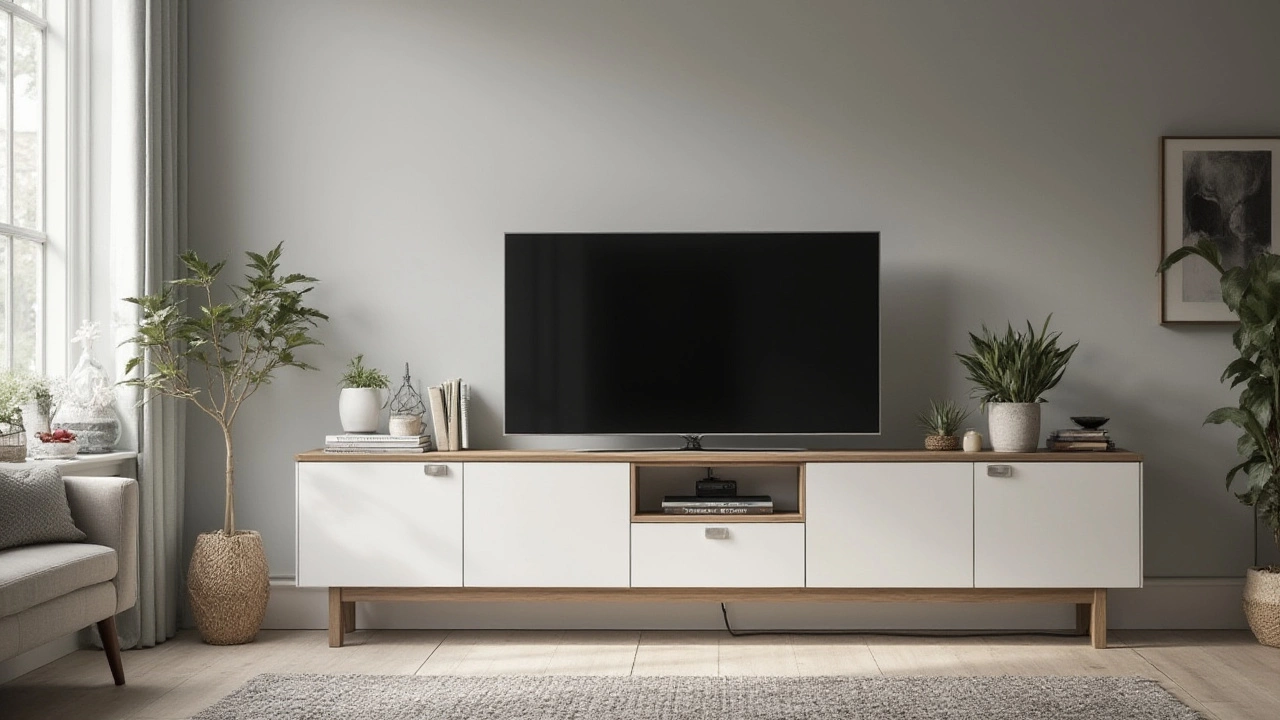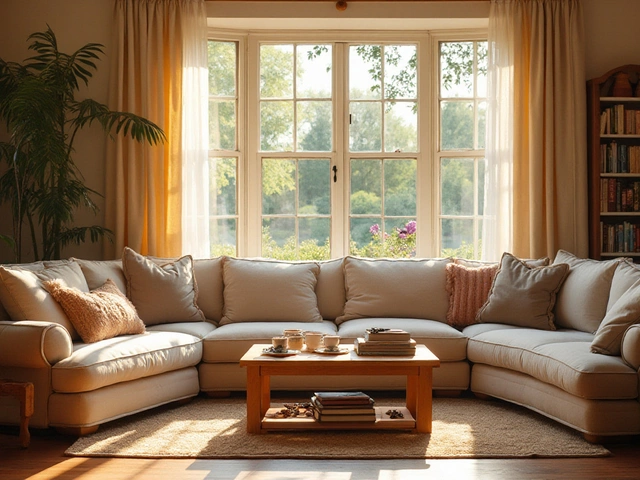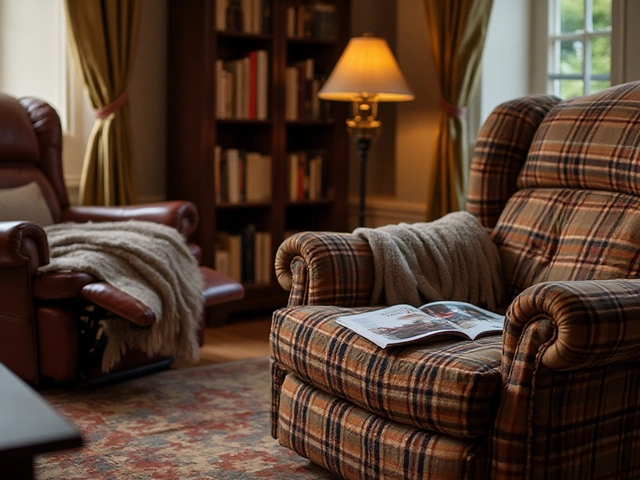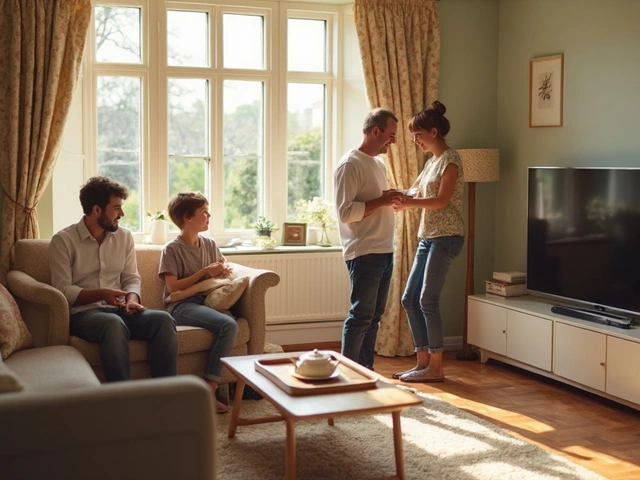 29
Jul,2025
29
Jul,2025
Picture this: You’re staring at an old dresser, one that’s sturdy but, frankly, kind of forgotten in your storage room. Meanwhile, your hunt for the perfect dresser as tv stand has left you unimpressed with overpriced or flimsy options at local shops. It sounds simple—use what you’ve got. But is it really that easy? Let’s get stuck into the details of whether your dresser’s got what it takes, what can go right (and horribly wrong), and how to make it all work for that relaxed Netflix binge you’ve been dreaming about.
Why People Use Dressers as TV Stands
People have always found ways to repurpose furniture—the kitchen table as a desk during lockdown, that hand-me-down armchair as a reading nook. But lately, especially in Melbourne, using a dresser as a TV stand is more than a thrifty move. It’s a style statement, a storage hack, and, surprisingly, not as crazy as it sounds.
For many renters and homeowners, the appeal starts with practical stuff. An average dresser offers way more storage than a run-of-the-mill TV unit. Standard TV cabinets are usually designed to hold just the TV and maybe a few electronics. By contrast, that chunky dresser can swallow up all the remotes, game consoles, spare cords, manuals, board games—heck, you could even stash your kids’ toys in there.
It also comes down to the size. Modern TVs (think 43-inch and up) rarely fit on those delicate little stands. Most dressers, especially ones built in the last three or four decades, have a nice big surface, sometimes pushing 1.5 metres long. That’s plenty of space for a large flat-screen, your soundbar, and maybe a lamp or two. Plus, the drawers are way better at hiding clutter than open TV units, so your living room instantly looks tidier.
Style-wise, dressers range from mid-century teak to French provincial, so there’s something out there no matter if your vibe is sleek or retro. You’re not limited to the typical black-and-glass TV bench either—a dresser’s aesthetic can add warmth or quirkiness other units can’t touch. In Melbourne, where housing styles range from art deco to modern minimalist, having a flexible option just makes sense.
People choose dressers for lots of personal reasons, too. Some do it for sustainability—reducing landfill, giving old furniture a fresh lease on life. Others just want to save a few bucks, especially young renters who’d rather invest in comfort than the perfect IKEA setup. Or maybe it’s about memory—a beloved piece passed down from family brings a bit of sentimental joy to everyday TV viewing. Whatever the motivation, the key is making sure your dresser doesn’t just look the part but actually does the job.
What to Consider Before Using a Dresser as a TV Stand
Okay, so the idea sounds great. But before chucking your TV on any random dresser, you’ve got to ask the practical questions. Not every dresser will be safe—or even remotely suitable—for the job. Here are some crucial points to run through.
- Weight Capacity and Stability: TVs aren’t as heavy as they used to be, but even the slimmest big-screen panels can tip if they’re not sitting on a steady base. Check the construction of your dresser. Is it solid wood, particle board, or a cheaper flatpack? Solid dressers handle weight and wobble much better. Make sure the top is level, and the legs don’t shake—especially important on uneven old floorboards often found in classic Melbourne terrace homes.
- Height: For comfortable TV viewing, the centre of your screen should be at eye level when you’re sitting down. Dressers are often taller (usually 80-90cm) than most purpose-built TV units (often 50-65cm). If the dresser is much taller than your couch, you might end up cricking your neck. On the flip side, a lowboy dresser can line up perfectly.
- Depth: Most modern TVs will fit, but if your dresser is from the ‘70s and designed for deep drawers, it could stick out awkwardly into your living room. Measure first. You want enough depth so the TV isn’t right up against the wall or threatening to be bumped off the edge.
- Drawer Access: Once that TV is on top, can you still open the top drawers? Sometimes the TV stand legs get in the way, making those drawers useless. Check before you commit.
- Cable Management: Dressers weren’t designed for cords, HDMI cables, set-top boxes, or Wi-Fi routers. Think about how you’ll route those cables in a neat, safe way. Some people run a small hole at the back of a drawer to hide routers or game consoles inside. Others use adhesive cable guides behind the dresser to keep things orderly.
- Wall Anchoring: This one’s a biggie if you’ve got small kids or pets. Unless your dresser is absolutely rock solid, anchor both the TV and dresser to the wall. Statistics from the Australian Furniture Association show tip-overs are a top cause of home injuries—so prevention is key.
Let’s see how those comparisons stack up in real life. Here’s an at-a-glance look at average specs for dressers vs TV stands found in Australian homes:
| Feature | Typical Dresser | Standard TV Stand |
|---|---|---|
| Average Width | 120-160cm | 90-150cm |
| Average Height | 80-100cm | 45-65cm |
| Weight Support | Up to 60kg (solid wood); 20-35kg (flat-pack) | Typically 20-40kg |
| Storage | 4-6 deep drawers | 2-5 shelves/drawers, mostly shallow |
| Cable Management | Rare, needs DIY | Often built-in holes/guides |
Make sure you go through this checklist before committing. It’s better to measure three times than to end up replacing your TV—or patching holes in the wall.

How to Style a Dresser as a TV Stand
Now that you know it’s possible (and what to double-check), it’s time to have a bit of fun with style. This is where dressers really outshine regular TV units; there’s so much room for personal flair and expression.
If you’re dealing with a modern, minimalist space, stick to low, clean-lined dressers—maybe something from the 1970s or a classic IKEA Malm. A simple lick of paint or a fresh set of handles can instantly turn a drab dresser into a statement piece. For those going for a retro or boho look, op-shop finds with intricate woodwork or original brass handles stand out beautifully beneath a sleek, modern TV.
Don’t let your TV be a big, lonely rectangle on top. Add some character to the setup. Use trays for remotes, lean a piece of art or a stack of books on one end, or tuck a big plant beside the dresser to soften the electronics. Your top drawers can be perfect for hidden storage—think board games, spare plugs, or that pile of takeaway menus we all pretend doesn’t exist.
If you’re a little more ambitious, swap out one drawer for a shelf to hold your game console or Blu-ray player. Use stick-on cable guides or even a small, neat hole drilled discreetly at the back for your Wi-Fi and TV cords. Got a small space? Go for a narrower, three-drawer dresser to keep things airy.
Lighting makes a huge difference too. Place a table lamp or a low LED strip on the back of the dresser for a soft glow. It’s practical (helps stop eye strain at night) and instantly ups the cosy factor. If you like a symmetrical look, flank the TV with vases or decorative bowls—just make sure nothing blocks the remote’s signal!
Worried about making holes or chipping paint? Use removable hooks or velcro strips to hold up decorative pieces or hide cords behind the dresser. It’s a quick fix, especially handy if you're renting and don’t want to lose your bond.
Sometimes the best ideas come from seeing how others did it. In Melbourne inner suburbs, it’s common to spot a 1960s dresser, given new life in a sunny living room of a renovated brick home. People get creative—stencils, new feet, even peel-and-stick wallpaper to add a pop of colour. The trick is balance: keep it practical but make sure it reflects your style. You can even swap dresser handles to match your coffee table or sofa legs for subtle cohesion.
Long-Term Use and Safety Considerations
Sure, you can use a dresser as a TV stand, but can it work long-term? Here’s what you need to keep in mind to keep things looking good and functioning safely a year—or even five—from now.
Most dressers are built to hold clothes—not electronics—so, over time, you might spot signs of wear. Watch for bowing drawers or tops that start to sag if you’ve put a monster-sized telly on an older piece. If you notice the wood creaking or warping, move the load around. Periodically tightening screws or reinforcing weak spots with brackets is simple DIY and can really extend your dresser’s life.
Dust is the silent enemy. Electronics attract dust, and drawers—especially older ones—can send fine particles wafting into the air every time you open them. The best fix? Use drawer liners and clean behind your dresser monthly. If you’re stashing electronics inside drawers, leave them slightly open or install passive ventilation with some neat holes at the back, so nothing overheats.
Safety is huge, especially with kids in the house or if there are pets bounding around. Always use a TV anti-tip kit. These are easy to find at Bunnings or Kmart, cost less than $20, and stop accidents before they happen. For extra security, anchor the dresser itself to the wall using L-brackets. In fact, the Victorian Health Department recommends anchoring any tall, heavy furniture in homes with young kids.
Another thing people forget—accessibility. If you stack too many electronics in the drawers, things get awkward when you need to swap a cable or reboot the modem. Sketch out your setup and label the inside of drawers so everyone in your house knows where to look (or how to reset the Wi-Fi without door-slamming panic).
Finally, think about resale or adaptability. If you’re planning to move or upgrade your TV, can your dresser adapt? Modular pieces—ones where the legs can be swapped or the back panel removed—make future changes easier. Some Melbourne upcyclers even add lockable castor wheels so the whole setup can be shifted for vacuuming or rearranging rooms.
The short answer to “Can you use a dresser as a TV stand?” is—absolutely. The longer answer: it might be the smartest, most stylish, and practical move you make if you know how to choose, tweak, and secure your setup. Whether you go for a classic timber look or a wild upcycled statement, the humble dresser brings flexibility and tons of practical storage to a modern Aussie home. And if you get bored? Paint it, move it, or swap it out—with a bit of DIY spirit, you really can't go wrong.




